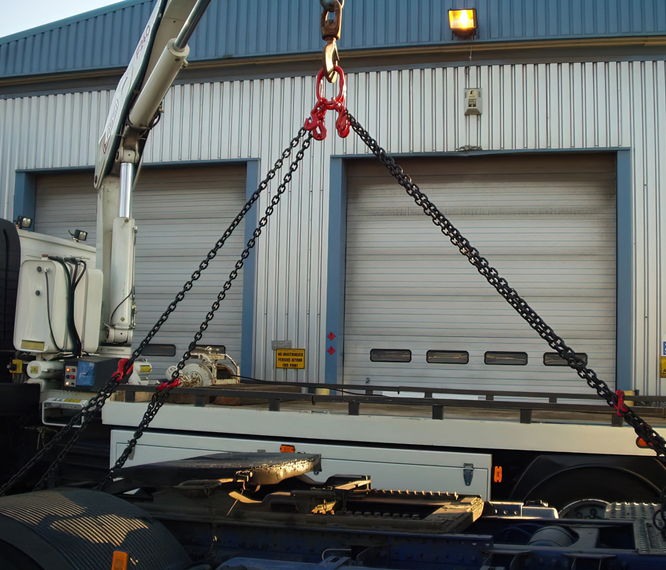















































































Used as a lifting or securement point, eye bolts & nuts are some of the most commonly used rigging fittings. And as is the case with all rigging fittings, the application determines which of the various types to use.
The four basic types are regular eye bolts, shoulder eye bolts, screw eye bolts and machinery eye bolts.
Regular and shoulder eye bolts are essentially the exact same part with the only obvious exception being the shoulder. The shoulder feature provides more stability to the base of the eye and therefore, makes it the recommended choice for angular loading. Regular eye bolts are not recommended for angular loading. Both regular and shoulder eye bolts have UNC-type threads.
Screw eye bolts are designed for screwing into wood. And because of this, do not have a working load limit assigned to them because it is not possible to determine the various densities and conditions of the wood the eye bolts are screwed into.

The following points need to be noted.
Do not paint or otherwise coat the eyebolt & nut, as this will make it difficult to check for defects or wear due to the masking of the coating.
If you find that the eyebolt & nut is worn or damaged, remove and replace them immediately; wear and damage will significantly reduce the load capacity of the eyebolt. Please also check the eyebolt & nut regularly: whether the eye is bent out of shape; whether the threaded shank is bent, deformed or the threads are worn, corroded or twisted; whether there are scratches, shavings or visible wear on the surface; whether there are signs that it has been modified in any way, e.g. by heating, cutting, grinding, welding, etc.; whether there are cracks on the surface; whether it lacks sufficient identification marks.
Do not exceed the rated capacity of the eyebolt.
Do not force the sling through the eyebolt; although convenient, this provides an angle lift that will reduce the WLL of the eyebolt.
Do not attach hooks or other accessories directly to the eyebolt, they should be attached to the eyebolt by means of a shackle, please select the appropriate grade of lifting shackle.
Do not rotate the load, this is very dangerous and the twist can damage the eyebolt and accessories, it can also cause the accessories to slip off and pose a danger to personnel and equipment.
The eyebolt should be lifted slowly and gradually, do not shock the load, sudden acceleration of the load or rapid changes in direction can cause a significant increase in load tension.
The Working Load Limit of Eye Bolts & Nuts is the load that can be lifted by a single eyebolt when the load is applied to the shank of the eyebolt.
The so-called 0° lift is when the load is lifted completely perpendicular or vertical to the shank of the eyebolt, which is also the standard lift applied through the shank of the eyebolt.
If there is any other angle of lift, it is an angular lift and the WLL of the eyebolt is reduced. The greater the angle, the more the WLL drops.
100% of the rated working load when lifting at an angle of 5°.
80% of the rated working load when lifted at an angle of 15°.
65% of the rated working load when lifting at an angle of 30°.
30% of the rated working load when lifted at an angle of 45°.
Lifting at an angle of 46° or more is not recommended.
